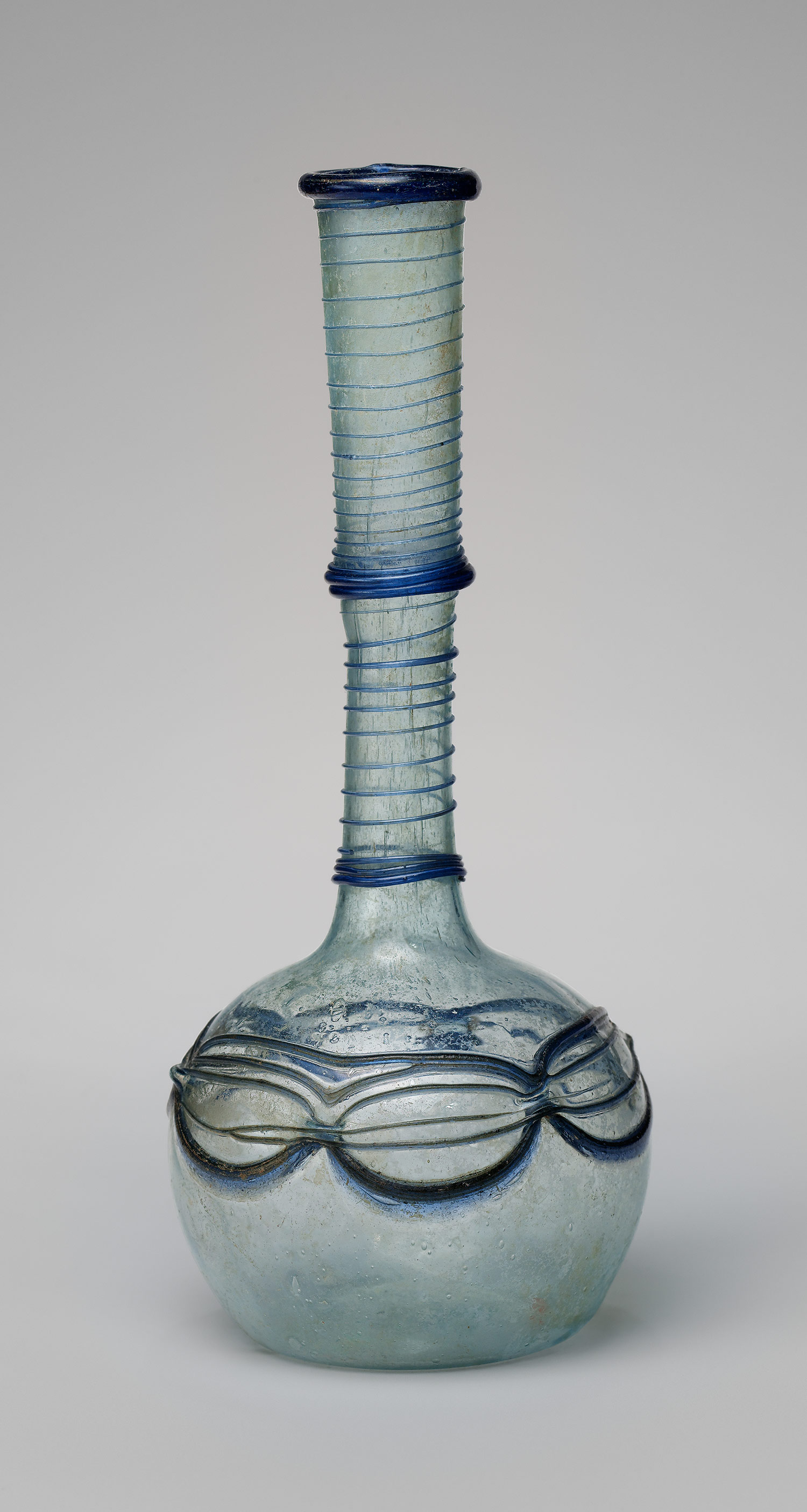
Pictured here is: "7th-early 8th century Bottle - Egypt or Syria. Bluish colorless and blue glass, free-blown and applied; h. 7 7/8 in. (20.1 cm), Max. Diam. 3 1/4 in. (8.2 cm)" - Metropolitan Museum of Art [NYC]
Glass
A small goblet still testifies to the fact that Egyptians had mastered the fundamentals of glass making more than 3,500 years ago. Collectors today, looking back over the intervening centuries, can trace a fascinating story. The Egyptians shaped their hollow vessels round cores of sand and pressed molten glass into open moulds. Some 2,000 years ago came the fundamental discovery that the hot glass could be shaped on a hollow rod by blowing, and Syria and Egypt thus produced great quantities of domestic vessels under the power of Imperial Rome.
From Rome in the first four centuries A.D. glass makers penetrated to the Roman colonies, and by the time the empire crumbled the craft had gained footholds in the Rhône Valley and along the Rhine and the Seine. It is probable that the Chinese acquired their knowledge of glass making and the pottery glaze first used during the Han dynasty [206 B.C.-A.D. 220] from the Romans. In the first century A.D. the Romans referred to China [the source of silk] as Seres, and the end of the overland caravan route was probably the Syrian coast, famous for its glass manufactures. But the Chinese made relatively little use of glass for important work, preferring to concentrate their attention on ceramics and jade carving. Little remains from the dark ages that followed the rise and fall of the Roman empire, but in the following pages the story is taken up again with the Venetian triumph of clear 'crystal' glass, and the result of this may be observed in the account of Bohemian glass.
England assumed the lead in domestic glassware in the late 17th c. with Ravenscroft's incomparable flint glass, and the story of the 18th and 19th c. embraces the contrasting purposes and rival techniques of Britain and America, of Scandinavia and France. In particular, the 19th c.'s technical triumphs emphasize that glass making is still a craft and an art, living, expanding, essential to mankind. [p. 237]
[L. G. G. Ramsey, F.S.A., ed. The Complete Color Encyclopedia of Antiques. Preface by Bevis Hillier, Editor of The Connoisseur. Compiled by The Connoisseur, London. New York: Hawthorn Books, Inc. 1962. Revised and Expanded Edition.]
Copyright
The contents of this site, including all images and text, are for personal, educational, non-commercial use only. The contents of this site may not be reproduced in any form without proper reference to Text, Author, Publisher, and Date of Publication [and page #s when suitable].